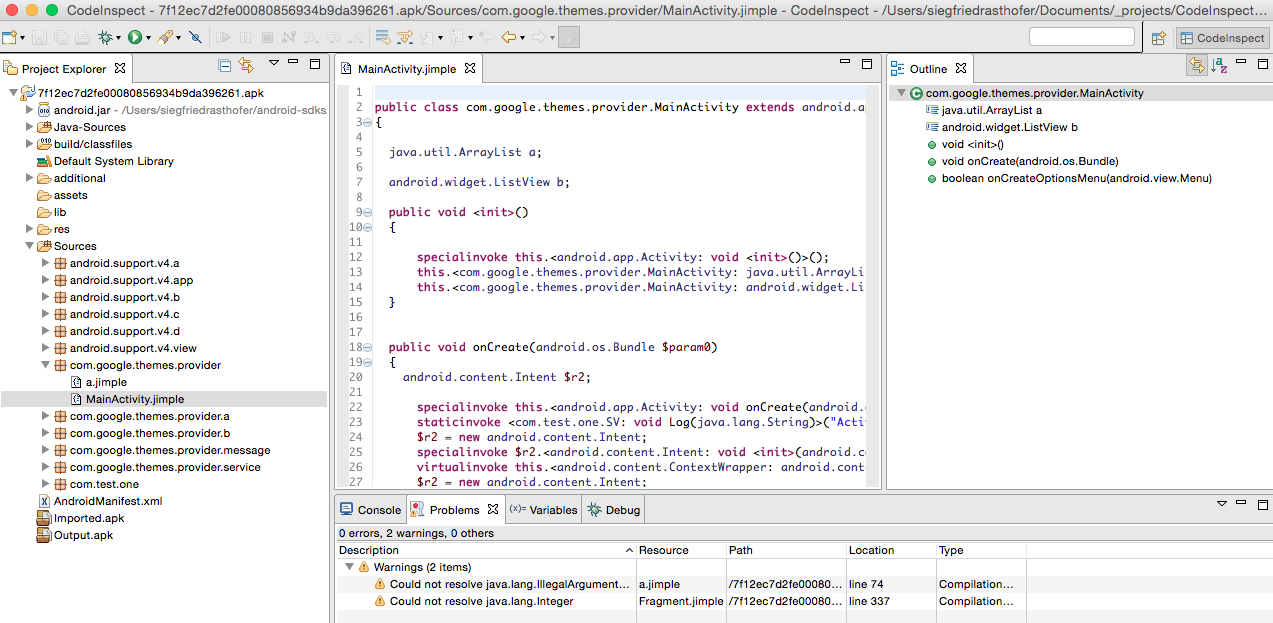CodeInspect says “Hello World”: A new Reverse-Engineering Tool for Android and Java Bytecode
Eric | December 26, 2014We are very happy to announce a new tool in our toolchain: CodeInspect – A Jimple-based Reverse-Engineering framework for Android and Java applications.
Developing an Android application in an IDE is very convenient since features like code completion, “Open Declaration“, renaming variables, searching files etc. help the developer a lot. Especially code-debugging is a very important feature in IDEs. Usually, all those features are available for the source code and not for the bytecode, since they support the developer not a reverse-engineer. Well, but all those features would be be also very helpful for reverse-engineering Android or Java applications. This is the reason why we came up with a new reverse-engineering framework that works on the intermediate representation Jimple and supports all the features above and a lot more. In the following we give a detailed description about CodeInspect and its features.
CodeInspect supports as input format a complete Android Application Package (apk), just the Android bytecode (dex-file) or a jar-file. In the following we will describe the different features based on a malicious Android apk.
Framework Overview
The figure above is a screenshot of CodeInspect. As one can see, CodeInspect is based on the Eclipse RCP framework and it is based on projects (apks), also known as workspaces. One can add as many projects as she/he wants. Furthermore, CodeInspect contains different perspectives, different views and a new editor for the intermediate representation. The main perspectives are the “CodeInspect” perspective as shown in the screenshot and the “Debug” perspective which is known from the general Eclipse IDE including views for “Expressions”, “Breakpoints” and “Variables”. Other basic views in the CodeInspect perspective are:
- Project Explorer: It shows all the important files in a readable format of an apk
- Outline: Shows all the fields and methods of a specific class. By clicking on an item, one directly jumps to the corresponding line in code.
- Console: Shows the console output.
- Problems: Shows all the warning and errors (e.g., compilation errors) that occur in the project.






